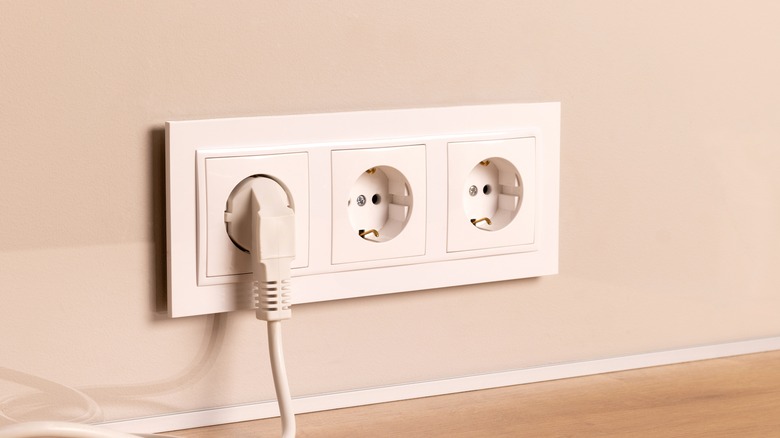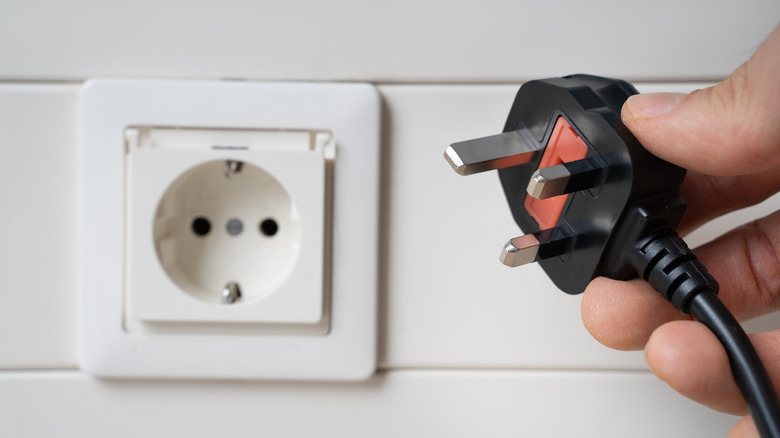Can You Install Foreign Wall Outlets From Other Countries Into Your Home?
It's a common cliche for first-time international travelers to be surprised that foreign countries use different wall outlets, but the amount of diversity in electrical infrastructure is impressive. There are 15 types of domestic plug and outlet combinations recognized by the U.S. Department of Commerce's International Trade Administration. North America primarily uses Type A (ungrounded) and B (grounded) plugs, whereas some are exclusive to one nation — only Thailand has Type O, for example. The breadth of offerings boils down to American inventors like Edison and Tesla building the first modern transmission grid in the 1800s, with other countries improving upon their own independent tech since no universal standard was set at the beginning. However, this begs the question: If you're an immigrant moving to the US, or are a homeowner who has relatives from another country visiting, is it legal to install a foreign wall outlet in your home? And is it safe to do so?
To be frank ... not really. Legally, any electrical work — including alterations, changing the type or purpose of an installation — will require a permit, and getting one varies state-to-state. However, Housing and Urban Development Code of Federal Regulations section 3280.806 states all home receptacle outlets should be a grounding type, installed per National Electrical Code (NEC) regulations, and of a particular voltage — "Except when supplying specific appliances."
Foreign wall outlets may also fail NEC requirements for GFCI protection, which cuts power in the event of an electrical surge (it's worth consulting an electrician about safer GFCI outlets in old homes, for this same reason). In fact, whether or not your preferred outlets meet legal standards, safety remains a concern.
Different Grids Make Foreign Wall Outlets at Home Into an Unsafe Proposition
The most important thing to note regarding foreign wall outlets is they often connect with power grids operating on different voltages. For example, the U.S. system supplies power at 110 volts, whereas European companies utilize 220 volts — more voltage means less current width required to efficiently move electricity, so power can be spread with thinner, cheaper wires. Various countries utilize their own electrical infrastructure to further complicate this matter. According to the International Trade Administration, Cuba uses 115 volts, Aruba uses 127, Libya uses 230, and so on. This is why so many plug types exist, and why you might blow a fuse by mismatching the currents when using a simple adapter, which is a common cause of home electrical fires.
Unsafe workarounds have also been addressed over the years. At one point European Union products were sold without a plug in England because the country used different outlet types, but England made electrical appliances with raw wires illegal in 1992.
With average household electricity consumption increasing by the decade, countries like America may need to continue innovating upon their electrical grids, bringing things closer to one uniform standard worldwide. Until then, even if you're upgrading your kitchen with seamless pop-up electrical outlets, it's not recommended to install foreign wall outlets at home for both legal and safety concerns.

